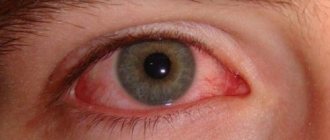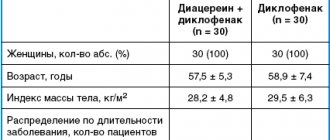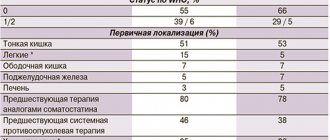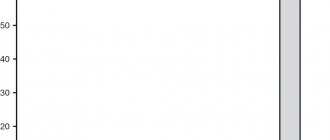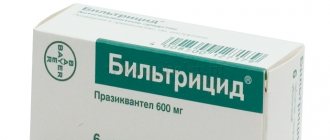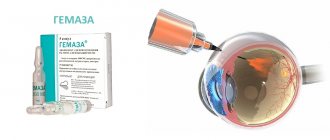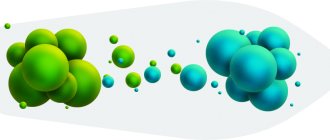Questions, answers, reviews on the drug Vita-Iodurol
You can look at questions about the drug, as well as ask your question to a specialist, using a free consultation with a pharmacist or pharmacist.
The information provided is intended for medical and pharmaceutical professionals. The most accurate information about the drug is contained in the instructions supplied with the packaging by the manufacturer. No information posted on this or any other page of our website can serve as a substitute for personal contact with a specialist.
| * | Our site does not sell medicines and other goods; they must be purchased in pharmacies, in accordance with current laws. Data on prices and availability in pharmacies is updated twice a day. Current prices can always be seen in the section Searching and ordering medications in pharmacies. |
special instructions
The drug cannot be taken orally or injected.
When using other eye drops, you should take a break of up to 15 minutes between installations.
During treatment with the drug, the use of soft contact lenses is not recommended. When using hard lenses, you should remove them before instillation. They can be used again 20 minutes after applying the drug.
Do not touch the pipette to the eye or other surfaces. Close the bottle tightly after use.
It is better to store the drug in a dark place at room temperature, away from children.
Shelf life: 3 years. An opened bottle must be used within 30 days.
Application of vita-iodurol by instillation and magnetophoresis
in the treatment of metabolic eye diseases Yu.F. Maitchouk, LA Larina Vita–iodurol in eye drops was effective in the treatment of 208 patients (276 eyes) with metabolic cornea diseases: lattice dystrophy, endothelial dystrophy, bullous keratopathy, postherpetic keratopathy. The efficacy was increased when vita–iodurol eye drops combined with magnetotherapy. The frequency of metabolic lesions of the cornea has been increasing in recent years, both primary hereditary and, especially, secondary, associated with corneal, cataract, antiglaucomatous surgery and inflammatory eye diseases [11]. Dystrophic diseases of the cornea, in the absence of a systematic course of treatment, progress tirelessly, and in the terminal period they are accompanied by corneal ulceration, corneal pain syndrome and loss of vision. Back in 1993, summing up the results of twenty years of observations covering 410 patients with primary corneal dystrophy [9], we emphasized the need for drug therapy, which can, on the one hand, delay the progression of dystrophy, and on the other, improve the condition of the cornea: corneal edema decreases, micro- and macroerosions are epithelialized, the stability of the protective tear film is improved, and visual acuity increases. Metabolic (reparative) therapy drugs occupy a central place in the treatment of corneal dystrophy. The pathogenetic commonality of damage to the cornea and lens, expressed in a violation of the body's antioxidant system, was the rationale for the use of “anti-cataract” drugs in the treatment of metabolic lesions of the cornea. Antioxidant therapy has become widespread in ophthalmological practice, including in the treatment of inflammatory (dystrophic) diseases of the cornea and lens lesions (cataracts). As reported by the Bulletin of the World Health Organization [12], antioxidants, including various vitamins, have been adopted as the basis of large-scale studies for the prevention of cataracts. The first antioxidant therapy drug successfully used in our practice for the treatment of various diseases of the cornea and lens was taufon [8]. Extensive clinical observations covering 438 patients made it possible to recommend the following dosage forms for practice: eye drops of 4% taufon, solution for subconjunctival and parabulbar injections, intramuscular injections, eye films with taufon. Another anti-cataract drug successfully used in the treatment of metabolic diseases of the cornea is facolene capsules [4]. 44 patients were under observation. For metabolic lesions of the cornea (postherpetic and dystrophic, including in combination with cataracts), the use of facolene had a therapeutic effect. The next anti-cataract drug studied for the treatment of dystrophic, inflammatory and degenerative changes in the cornea and conjunctiva was oftan-katachrome. Long-term observations covering 379 patients showed the effectiveness of the drug in the complex treatment of postherpetic epitheliopathy and keratopathy, herpetic ulcerative keratitis at the stage of epithelization, recurrent erosion and as monotherapy for corneal dystrophy. Carnosine occupies an important place among antioxidant agents. Eye drops of 5% highly purified natural carnosine were used in the treatment of 180 patients with corneal lesions, as well as in 75 patients after excimer laser refractive surgery of the cornea [5]. Carnosine had a pronounced therapeutic effect in the complex treatment of herpetic, bacterial and fungal keratitis. As observations carried out under the leadership of V.V. Kurenkov have shown, carnosine eye drops accelerate the re-epithelialization of the cornea after photorefractive keratectomy [5]. Having such experience in the use of anti-cataract drugs for the treatment of metabolic diseases of the cornea, we considered it appropriate to conduct observations on the use of Vita-iodurol eye drops in the complex treatment of corneal metabolic pathology, including in combination with initial cataracts. The first observations, covering 30 patients (18 with secondary postherpetic corneal dystrophy and 12 with primary endothelial dystrophy) confirmed the effectiveness of vita-iodurol instillations [7]. At the same time, we have accumulated extensive experience showing that the local use of drugs (naklof, lokferon, ophthalmoferon, dexamethasone, etc.) in combination with magnetotherapy significantly increases the therapeutic effect for eye diseases [2, 10]. This served as the basis for conducting comparative studies of Vita-Iodurol eye drops in the form of instillation and in combination with magnetotherapy (Vita-Iodurol magnetophoresis). Patients and methods 208 patients (276 eyes) were observed: primary lattice stromal corneal dystrophy (28 patients, 56 eyes), primary endothelial corneal dystrophy (50 patients, 64 eyes), secondary corneal dystrophy after corneal and antiglaucomatous surgery (74 patients, 88 eyes), postherpetic trophic keratopathy (56 patients, 68 eyes) [Table 1]. All patients were hospitalized, general ophthalmological and microbiological examinations, and tear film examination with fluorescein and rose bengal staining were performed. Each of the groups was divided into two subgroups: in the first, instillation of vita-iodurol was used 2 times a day, in the second, an additional magnetic therapy session was performed daily, for a course of 10 sessions. Magnetotherapy was performed using the Polyus-3 device, which generates a low-frequency rotating magnetic field with the following parameters: induction 10 mT, frequency 17 Hz, procedure duration 8 min [2]. VITA-YODUROL – eye drops from Ciba Vision, Novartis Company, France. Active ingredients: calcium chloride 0.20 g, magnesium chloride 0.30 g, nicotinic acid 0.03 g, adenosine 0.10 g. Other ingredients: sodium chloride 0.65 g, benzalkonium chloride 0.01 g ., sodium hydroxide to pH = 6.5, purified water to 100.0 ml. Available in 10 ml dropper bottles. The main pharmacological properties of the components acting in metabolic lesions of the lens and other eye tissues [1]: – adenosine triphosphate plays a major role in the energy metabolism of tissues; – nicotinic acid increases capillary resistance and reduces their expansion, a coenzyme precursor, necessary for tissue detoxification and intracellular nutrition with amino acids; – a combination of metal salts improves intraocular circulation; – magnesium chloride promotes intermediate metabolism disturbed in tissues; – thiamine plays a role in the nutrition of the eye by stimulating the activity of energy mitochondrial metabolism. Additional therapy included: artificial tears (oftagel, lacrisifi, polyglucin), antiallergic (lecrolin), antibacterial in the presence of a secondary bacterial infection (fucithalmic, vitabact and okacin). Patients with postherpetic keratopathy additionally received Zovirax ophthalmic ointment 4 times a day and Valtrex orally, 1 tablet. within 10 days. Results and discussion Therapeutic effectiveness in each of the clinical groups is summarized in table. 1. Primary stromal lattice dystrophy. This is the most common clinical form; according to our observations, it is 43.2% among patients with primary stromal dystrophies [9]. Only by chance are patients identified with initial signs of dystrophy; more often patients were admitted with a picture of an extensive network of opacities in the form of a “lattice” or “cracked glass”. Even more often, patients had a dense and coarsened network of opacities with the participation of point and then large diffuse opacities in the stroma. In 98% of cases, dry eye syndrome is detected, the surface of the cornea is often eroded, and foci of degeneration appear on the surface (Fig. 1). Among patients receiving instillation of vita-iodurol, the duration of treatment was 18.5 days (Fig. 2), significant clinical improvement was noted in 21.5%, improvement in 17.9%, and remained unchanged in 10.7%. The effectiveness of vita-iodurol magnetophoresis is as follows: the duration of treatment is 14.3 days, significant clinical improvement was noted in 50%, improvement in the remaining 50%. The final outcome in terms of vision is quite high, an increase in visual acuity occurs earlier and more effectively. Primary endothelial dystrophy of the cornea (Fuchs' dystrophy). It is one of the most common corneal lesions, ranging from the asymptomatic drop corneal phenomenon (cornea guttata) to severe corneal edema, subepithelial fibrosis, epithelial microerosions and bullous changes. The pathogenesis of lesions is associated with dysfunction of the corneal endothelium [11]. Develops at the age of 45–50 years. We observed 50 patients (64 eyes). The average age is 62 years, the severity of dystrophy is moderate and severe with intense edema of the stroma, the formation of microcystic edema of the epithelium, the formation in half of the cases of bullous changes with their rupture and the formation of erosions. Among patients receiving instillations of vita-iodurol, the duration of treatment was 18.8 days, a significant improvement in condition was noted on average in 28.2%, improvement in 65.5%, no change in 6.2%. With vita-iodurol magnetophoresis, the duration of treatment was 15.2 days, significant improvement was noted in 65.6% and improvement in the remaining 34.4% of cases. The higher effectiveness of magnetophoresis should be associated with the pronounced anti-edematous and anti-inflammatory effect of magnetic therapy. Secondary bullous dystrophy of the cornea. We observed 74 patients (88 eyes) who had previously had corneal, cataract, antiglaucomatous or combined surgery. Corneal damage was assessed as moderate or severe, with pronounced edema of the corneal stroma and epithelium, focal and diffuse stromal opacification, significant bullous phenomena (Fig. 3), micro- and macroerosions of the cornea, and severe keratoconjunctivitis sicca. Patients receiving vita-iodurol instillations were treated for an average of 22.1 days, significant improvement was noted in 38.7% and improvement in 54.5%, no change was observed in 6.8%. With vita-iodurol magnetophoresis, the duration of treatment was 15.2 days, significant improvement was noted in 63.7% and improvement in the remaining 36.3%. Postherpetic trophic keratopathy. After suffering postherpetic keratitis, many patients within 2-4 months experience symptoms of epitheliopathy - microerosion of the cornea due to the fragility of the epithelial cover [3, 13]. In more severe cases, bullous phenomena occur, blisters may reappear or disappear, but even when they open with the formation of extensive defects in the corneal epithelium, they do not cause severe pain. Swelling of the stroma occurs, foci of turbidity form in the stroma. The disease tends to have a long-term relapsing course and may be accompanied by a significant decrease in vision. Dry keratoconjunctivitis often develops. When using vita-iodurol in instillations, the duration of treatment is 17.3 days, significant improvement was noted in 50% of cases and improvement in the remaining 50%. When using vita-iodurol magnetophoresis, the duration of treatment was shorter - 13.2 days, significant improvement was noted in 76.5% and improvement in 23.5% of cases. Thus, the observations showed that in case of primary and secondary corneal dystrophy, metabolic therapy eye drops Vita-Iodurol have a pronounced therapeutic effect. The therapeutic effect increases if the instillation of vita-iodurol is supplemented with magnetotherapy, which has an anti-edematous and anti-inflammatory effect. Treatment with vita-iodurol is especially indicated when there is initial cataract, which is often found in corneal dystrophy. According to clinical observations, patients tolerate Vita-Iodurol eye drops well; no discomfort in the eyes was observed after instillation of the drug.
Literature 1. Vita-iodurol. Proceedings of the symposium. Ciba Vision. 1997. Moscow. P.34 2. Larina L.A., Vakhova E.S., Maichuk Yu.F. Magnetophoresis of the drug Naklof in the treatment of uveitis. New drugs. 2001. No. 1.–P. 9–11. 3. Maychuk Yu.F. Herpesvirus eye diseases. In the book: “An unknown epidemic: herpes.” Smolensk 1997. – pp. 62–74. 4. Maichuk Yu.F., Bazukina L.P., Orlovskaya L.E., Lapshina N.A., Khaitova K.N., Yakushina L.N. The use of facolene in patients with an allergic reaction to anti-cataract drops. Vestn. ophthalmol. 1991. v.107. No. 3.–P.68–71. 5. Maychuk Yu.F., Bazukina L.P., Orlovskaya L.E., Lapshina N.A., Makarova L.G. The use of catachrom eye drops for inflammatory and degenerative lesions of the cornea and conjunctiva. New drugs. 1994.No.11.–P.12–14. 6. Maychuk Yu.F., Kurenkov V.V., Maychuk D.Yu., Sheludchenko V.M., Sergienko V.N., Formazyuk V.E. The effectiveness of the use of carnosine drops in the treatment of diseases and excimer laser surgery of the cornea. Ophthalmol. magazine 2000.No.4.–P.24–25. 7. Maychuk Yu.F., Larina L.A. The use of Vita-Iodurol eye drops for metabolic eye lesions. New drugs. 2002.No.11.–P. 20–22. 8. Maychuk Yu.F., Orlovskaya L.E. Medicines of taufon and methods of their use for diseases of the cornea. Methodological recommendations of the Ministry of Health of the RSFSR. 1991.13p. 9. Maychuk Yu.F., Orlovskaya L.E. Stromal corneal dystrophy: clinical forms and treatment. Ophthalm. magazine. 1993. No. 4 – pp. 224–234. 10. Tokarev D.E., Larina L.A., Naumova N.N. Maychuk Yu.F. Magnetophoresis of the drug lokferon in the treatment of herpetic drugs. New drugs. 2001. No. 1 – pp. 12–14. 11. External Disease and Cornea. Basic and clinical science courset. AAA LEO. – 549 P. 12. Gritz DC Can cataract be prevented? Bulletin of the World Health Organization. 2001. V.79. No. 3. P. 260–261. 13. Kaufman NE, Payfield MA Viral conjunctivitis and keratifis. Lu: The Cornea. Ed. H. E. Kaufman et al Churchill Livingston. 1998– P. 299–332.
![Table 1. Comparison of the results of treatment with Tribestan for men with oligoasthenozoospermia [7] with mod.](https://laram-halal.ru/wp-content/uploads/tablica-1-sravnenie-rezultatov-lecheniya-tribestanom-muzhchin-s-oligoastenozoospermiej-7-330x140.jpg)

